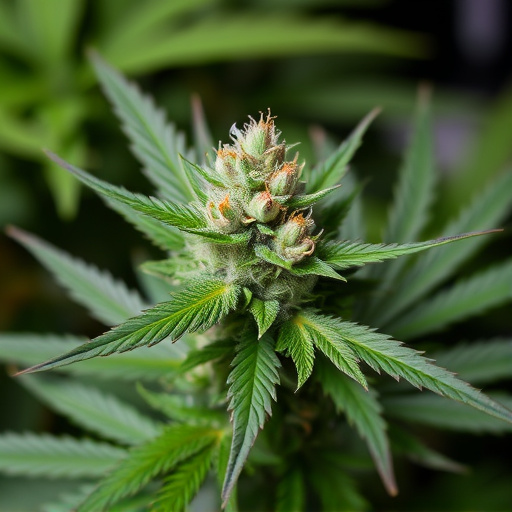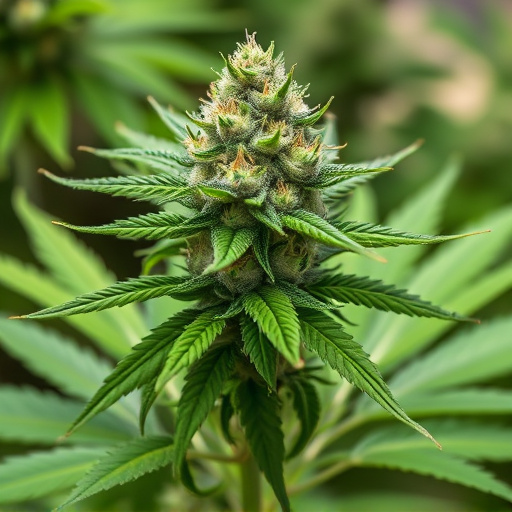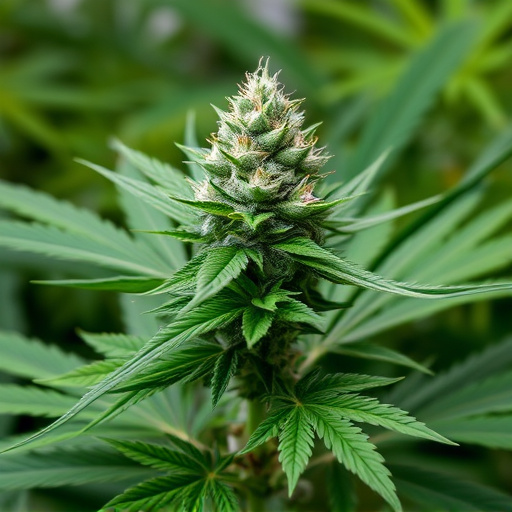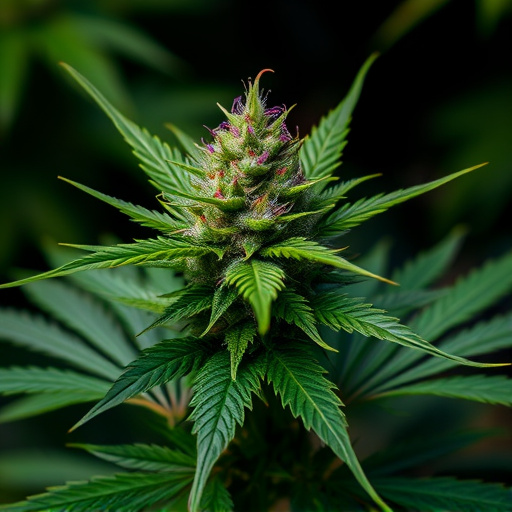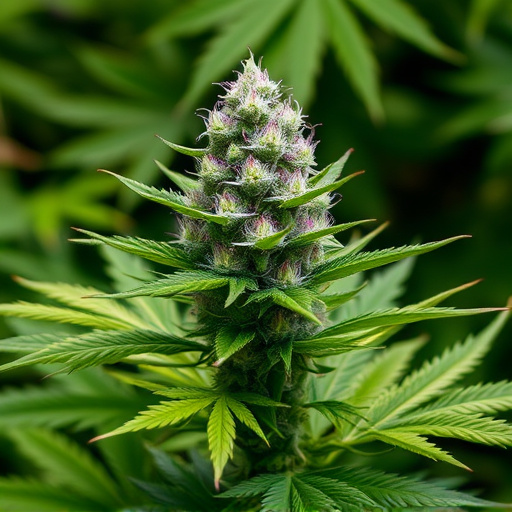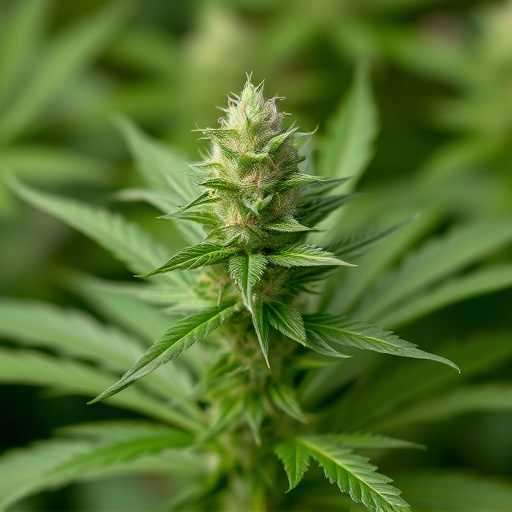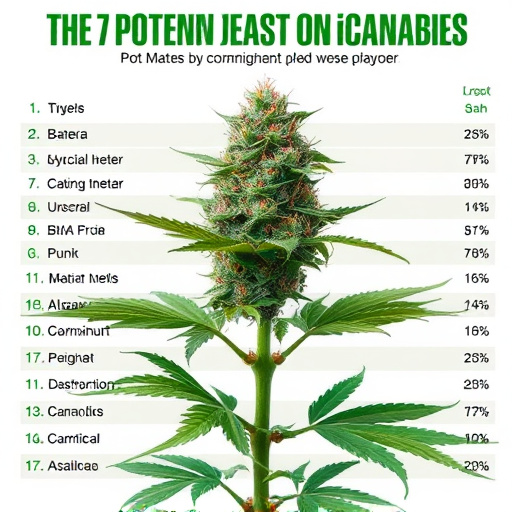The most potent strains of cannabis are cultivated for their high concentrations of cannabinoids THC and CBD, offering a variety of potential medical benefits. These compounds interact with the body's endocannabinoid system, providing therapeutic effects ranging from pain relief to anxiety mitigation. Understanding these unique chemical profiles is crucial for targeted treatments, as high-CBD strains show promise in conditions like chronic pain and insomnia without psychoactive effects. As knowledge expands, so does our understanding of these strains' distinct medicinal advantages.
Cannabis flowers have gained significant attention for their medicinal properties, offering a natural alternative for various health conditions. This article delves into the science behind these benefits, focusing on understanding the chemical composition of cannabis flowers, particularly terpenes and cannabinoids. We explore how these compounds interact to provide therapeutic effects, with a special emphasis on the most potent strains known for their medical applications.
- Understanding Cannabis Flowers and Their Chemical Composition
- The Role of Terpenes and Cannabinoids in Medical Effects
- Exploring the Most Potent Strains for Therapeutic Purposes
Understanding Cannabis Flowers and Their Chemical Composition

Cannabis flowers, also known as buds, are the most recognizable and valuable part of the cannabis plant, containing a wide range of chemical compounds that contribute to its medicinal properties. These flowers are rich in cannabinoids, the most well-known being tetrahydrocannabinol (THC) and cannabidiol (CBD). THC is primarily responsible for the plant’s psychoactive effects, while CBD offers potential therapeutic benefits without inducing intoxication.
The chemical composition of cannabis flowers varies among different strains, with some considered the most potent in terms of both THC and other cannabinoids. These high-potency strains have been cultivated over time to maximize their medicinal properties. Understanding the unique chemical profile of various cannabis strains is essential for patients seeking specific treatments, as different cannabinoids interact with the body’s endocannabinoid system in diverse ways, providing a multitude of potential medical applications.
The Role of Terpenes and Cannabinoids in Medical Effects

The medical benefits of cannabis flower are attributed to a complex interplay of chemical compounds, primarily terpenes and cannabinoids. Terpenes, aromatic compounds found in many plants, contribute to the distinct smell and flavor of different cannabis strains. Beyond sensory appeal, these terpenes have been linked to potential therapeutic effects. For instance, myrcene, known for its earthy scent, has shown sedative properties, while limonene is associated with uplifting and anti-anxiety effects.
Cannabinoids, on the other hand, are unique to cannabis and interact with our body’s endocannabinoid system (ECS). The most well-known cannabinoid is THC (tetrahydrocannabinol), responsible for the plant’s psychoactive effects. However, CBD (cannabidiol) has gained significant attention for its potential therapeutic benefits without the psychoactive properties. Many of the most potent strains of cannabis are celebrated for their high cannabinoid content, offering a range of medical advantages, from pain relief to anxiety mitigation and anti-inflammatory actions.
Exploring the Most Potent Strains for Therapeutic Purposes
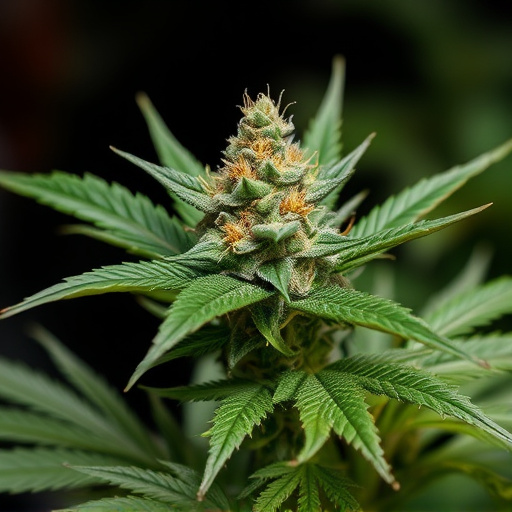
When exploring the medical potential of cannabis, understanding the most potent strains is crucial. Certain varieties boast higher concentrations of cannabinoids like THC and CBD, making them more effective for specific therapeutic applications. For instance, strains with elevated THC levels have shown promise in treating chronic pain, insomnia, and appetite loss—common conditions for which patients often seek alternative relief.
Research also highlights the benefits of high-CBD strains, which are increasingly popular among those looking for potential anti-anxiety or anti-seizure effects without the psychoactive effects of THC. These strains offer a promising avenue for exploring cannabis’s therapeutic range without the “high.” As knowledge and acceptance of cannabis medicine grow, so does our understanding of the most potent strains and their unique medicinal properties.
Cannabis flowers offer a wide range of medical benefits, primarily due to their unique chemical composition, including terpenes and cannabinoids. Understanding these components and their interactions is key to harnessing the power of cannabis for therapeutic purposes. Among the various strains, certain most potent strains have proven effective in treating diverse conditions. Further research into these compounds and their applications can unlock even greater potential for cannabis-based medicine.

